Connecting Themes, Characters, and Critical Issues across the Global Community
by Janelle Mathis, University of North Texas, Denton, TX
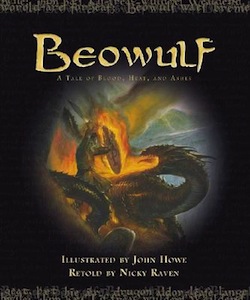 While I taught secondary English at both middle and high school levels during my early years of teaching, I soon focused more so on the middle school grades, and, in later graduate work with literature, elementary levels were a focus. However, in recent years teaching classes that include preservice secondary teachers, I have been forced to consider the classics and the ultimate goal of many of these—to teach the canon.My own reflections of teaching secondary classes reveal a time when there was not such a wealth of books for young readers—rich in social issues, diversity of characters, and unique plot arrangements. And so, I try to work with these individuals to make them aware of this rich resource—one that most are not aware of, as mentioned in earlier blogs.
While I taught secondary English at both middle and high school levels during my early years of teaching, I soon focused more so on the middle school grades, and, in later graduate work with literature, elementary levels were a focus. However, in recent years teaching classes that include preservice secondary teachers, I have been forced to consider the classics and the ultimate goal of many of these—to teach the canon.My own reflections of teaching secondary classes reveal a time when there was not such a wealth of books for young readers—rich in social issues, diversity of characters, and unique plot arrangements. And so, I try to work with these individuals to make them aware of this rich resource—one that most are not aware of, as mentioned in earlier blogs.
In a class last year, one of the future high school teachers in a literature focused class chose the debate about the canon and its role in contemporary classrooms as her project. Her focus included different recent “sides” to the issue as put forth by major scholars to include that while the canon has stood the “test of time” it has limited perspectives. Of course, all teachers today can admit that greater authentic cultural diversity needs to be included in the literature of secondary classes. Another question evolved in this student’s work regarding the notion of “dead white men” as authors. Have the classics withstood the test of time because they are great literature, or is it because they are required reading and contained in anthologies? I can use this as a means to state my own beliefs that I share in classes: The classics have been around for a reason—universal theme and characters—and that means these themes are still present today. They are present in the literature that is written about and for our contemporary society and these themes connect us with eras long gone. So perhaps the key concept here is the need to find relevancy in the classics for young readers today, making connections to literature that continues this thread, and this relevancy can be found in contemporary works as well as the canon. With texts that invite students into relevant situations, using more contemporary language to share characters in which these teens may find pieces of their own lives and personalities, literature can take on its role of building identity. At the same time the distance between eras represented in books is minimized both from personal connection perspectives and as a student takes a critical stance—both in literary theory and from a socio-cultural perspective.
Synthesizing the canon and contemporary books becomes the next challenge and one that I will pose as a focus for your responses to this last blog for the month. Pairing books and creating text sets appear to be obvious strategies and are suggested in the literature. Examples are found in resources, both print and online, but, of course, the best examples come from those teachers who also are aware of the resources in recent literature for their high school classes. A few examples will be shared here with hopes that others will provide examples from their experiences or from their current knowledge of adolescent and YA literature and themes.
One strategy involves looking at recent retellings of traditional tales and comparing these by noting differences in language, character development, and overall themes—do they vary from the original? Beowulf, for example, has seen several retellings in illustrated books. Beowulf, A Tale of Blood, Heat, and Ashes (Raven, 2007) features illuminating illustrations by John Howe. Beowulf , A Hero’s Tale Retold (Rumford, 2007) provides yet another retelling with a very different approach to illustrations. Garth Hinds (2007) provides yet another rendition, Beowulf, in graphic novel format.
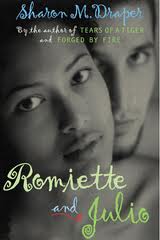 Of course, the Romeo and Juliet themes continue to be revisited in literature for the young. It’s themes of love in spite of outside opposition and conflict between families and social groups that are explored in books such as Sharon Draper’s (2001), Romiette and Julio. The theme of prejudice towards lovers from different backgrounds is evident in If You Come Softly (Jacqueline Woodsen, 2010) or Son of the Mob (Gordon Korman, 2004). And while Walter Dean Myers, with Javaka Steptoe as illustrator, created Amiri & Odette, a Love Story (2009) to be a modern retelling of the Swan Lake Ballet, some have found its themes to also connect to Romeo and Juliet since the couple’s love is forever despite the difficulties of the “streets.”
Of course, the Romeo and Juliet themes continue to be revisited in literature for the young. It’s themes of love in spite of outside opposition and conflict between families and social groups that are explored in books such as Sharon Draper’s (2001), Romiette and Julio. The theme of prejudice towards lovers from different backgrounds is evident in If You Come Softly (Jacqueline Woodsen, 2010) or Son of the Mob (Gordon Korman, 2004). And while Walter Dean Myers, with Javaka Steptoe as illustrator, created Amiri & Odette, a Love Story (2009) to be a modern retelling of the Swan Lake Ballet, some have found its themes to also connect to Romeo and Juliet since the couple’s love is forever despite the difficulties of the “streets.”
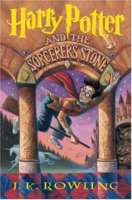 The Odyssey is another classic whose journey can be compared to more recent works. Such as Nancy Farmer, A Girl Named Disaster (1996) or even Gary Paulson’s Wood Song (2007) create a journey to be compared, and the upcoming issue of WOW Review contains other stories of journeys that can parallel the journey that Odysseus was compelled to take. Yet another general theme to explore in light of the Odyssey might be that of quests—the larger scale social quests as well as personal quests and titles that might be included are Enders Game (1994), Hunger Games (2008) and even
The Odyssey is another classic whose journey can be compared to more recent works. Such as Nancy Farmer, A Girl Named Disaster (1996) or even Gary Paulson’s Wood Song (2007) create a journey to be compared, and the upcoming issue of WOW Review contains other stories of journeys that can parallel the journey that Odysseus was compelled to take. Yet another general theme to explore in light of the Odyssey might be that of quests—the larger scale social quests as well as personal quests and titles that might be included are Enders Game (1994), Hunger Games (2008) and even 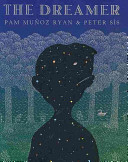 Harry Potter (beginning in 1998). Stories of personal quests and accomplishments are also found in biographical works, such as The Dreamer (Ryan, 2010), or the stories around Martin Luther King or Wangarii Matthau.
Harry Potter (beginning in 1998). Stories of personal quests and accomplishments are also found in biographical works, such as The Dreamer (Ryan, 2010), or the stories around Martin Luther King or Wangarii Matthau.
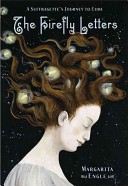 Themes of strong women might connect to the novels of Jane Eyre—titles such as Keeping Corner (Sheth, 2009) or Wanting Mor (Khan, 2010) or The Firefly Letters (Engle, 2010). Or the social issues of the Victorian era might in their company such books as Iqbal (D’adamo, 2005) or Bread and Roses Too (Paterson, 2008). The theme of unlikely friendships in Samir and Yonaton (Carmi, 2000) or Me and No (de Vigan, 2010) might be paired with Steinbeck’s Of Mice and Men or Twain’s Tom Sawyer.
Themes of strong women might connect to the novels of Jane Eyre—titles such as Keeping Corner (Sheth, 2009) or Wanting Mor (Khan, 2010) or The Firefly Letters (Engle, 2010). Or the social issues of the Victorian era might in their company such books as Iqbal (D’adamo, 2005) or Bread and Roses Too (Paterson, 2008). The theme of unlikely friendships in Samir and Yonaton (Carmi, 2000) or Me and No (de Vigan, 2010) might be paired with Steinbeck’s Of Mice and Men or Twain’s Tom Sawyer.
With these examples as just a beginning point, what connections do you see between current adolescent or YA books you have read and the canon as you remember it or as you are now teaching it? What books might give new life to the canon as we know it currently? As the winter break can afford more time to reflect on those classics most meaningful to us, perhaps connecting it to some current explorations in YA literature might reveal some new personal insights about these works.
Please visit wowlit.org to browse or search our growing database of books, to read one of our two on-line journals, or to learn more about our mission.
- Themes: classics, Janelle Mathis
- Descriptors: Books & Resources, Debates & Trends, Student Connections, WOW Currents

Great article. I entirely agree that the classics have endured largely because of their still-relevent and realtable themes. I also think it is important to teach the classics because they increase cultrual literacy. There is value in being able to pick up on (and make your own) literary references.
Before the teen-fiction juggernaught that is The Hunger Games burst onto the middle and high school scene, I had always had the most success with Romeo and Juliet. Class after class, my students were entertained by Romeo’s melodrama, Mercutio’s wit, Tybalt’s fury, and the Friar’s ill-conceived meddling. Because my students were entertained by and engaged with the text, it was easy to guide them towards a critical analysis of the play’s central topics of pride, passion, and rivalry.
While my students still enjoy Romeo and Juliet, The Hunger Games has completely supplanted it as the favorite unit. Never before have I seen students so eager to read a novel, or to discuss what they have read. It’s wonderful.
For my part, I think it is a mediocre novel, with only a superficial introduction to important social issues. But it’s a great starting point! Half the battle is always to get students reading, and with The Hunger Games, that is a complete non-factor.
If you are teaching The Hunger Games, have a look at this Unit Plan for The Hunger Games. I found it very helpful.
Thanks again for the compelling article.